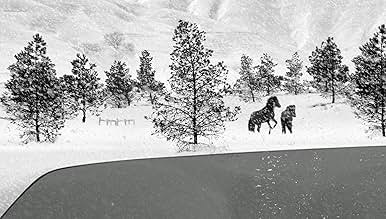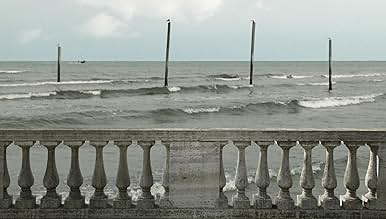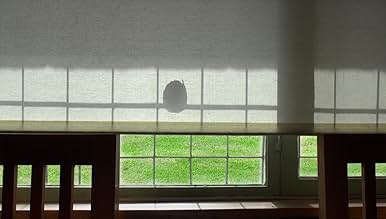CALIFICACIÓN DE IMDb
6.8/10
2.4 k
TU CALIFICACIÓN
Es un proyecto experimental que el cineasta Abbas Kiarostami realizó durante los últimos tres años de su vida. Es una colección de 24 cortometrajes de cuatro minutos y medio de duración, que... Leer todoEs un proyecto experimental que el cineasta Abbas Kiarostami realizó durante los últimos tres años de su vida. Es una colección de 24 cortometrajes de cuatro minutos y medio de duración, que se inspiran en imágenes fijas, como pinturas y fotografías.Es un proyecto experimental que el cineasta Abbas Kiarostami realizó durante los últimos tres años de su vida. Es una colección de 24 cortometrajes de cuatro minutos y medio de duración, que se inspiran en imágenes fijas, como pinturas y fotografías.
- Dirección
- Elenco
- Premios
- 3 premios ganados en total
Opiniones destacadas
Most people want to compare this movie to non-narrative visual art, and that's not what I saw. Really, it reminded me more of The Ballad of Buster Scruggs, another collection of short stories which feels meticulously plotted yet like an illusion that vanishes when you try to make literal meaning out of it. The two are the best evocation of the era when short story collections mattered to normal people and vice versa. There are almost no humans, but the movie is full of perfectly observed character moments that are orchestrated with thematic precision. This is the Winesburg, Ohio of avant garde filmmaking, and probably a better cinematic version of that book's accomplishments in micro-observation than the adaptation.
Gr8 Background !
It's like living wallpaper for your TV !
24 LIVING FRAMES !
.hence the name.
And some gr8 tunes too.
Frame 13 was brutal ! True and touching !
Frame 13 was brutal ! True and touching !
'24 Frames' is one of those films that, in retrospect, is said to be a testament of a great director. There are enough arguments in favor of this categorization, including the final frame or scene in which we have on the screen the image of another screen in which the end of a classic film unfolds, including the magical 'The End'. And yet, even though Abbas Kiarostami was 76 years old when he filmed '24 Frames', I don't think that his intention was to create a testament film. This film radiates search and exploration of new ways of artistic expression. Far from being some 'last famous words', it seems more like a mid-career film of an artist in constant search. Returning to some of the tools he had used many decades before, at the beginning of his journey as an artist, the Iranian director combines them with the most advanced techniques of animation and digital image processing. A complete and versatile artist, Abbas Kiarostami has created in '24 Frames' a work of art that defies categorization. Personally, I confess that I have never been able to fully understand what the boundaries are between cinematography as art and video art. '24 Frames' seems to belong to both and many other fields of art. Watching it is a spiritual experience.
24 is a magic number in cinematography. 24 frames per second was the standard for classic projectors. The day has 24 hours and in the film time is one of the main subjects. Abbas Kiarostami constructed his work as a sequence of 24 sequences, each 4 and a half minutes long. Fixed, classic forms were one of the aesthetic obsessions of the creator who was, among many others, a creator of haikus. The first frame starts from a famous painting by Pieter Bruegel the Elder, 'Hunters in the Snow'. With the help of computer animation, portions of the painting wake up one by one. The soundtrack also comes to life placing the painting into its natural and period context. What was a snapshot of a single moment in time becomes a moment in a sequence of the passage of time. Similar patterns will be present in the following frames, but the starting points are photos created by the author. In its early versions '24 Frames' was supposed to be a sequence of reflections on art starting from famous paintings, as in the first frame, but due to copyright reasons Kiarostami had to change his strategy and used his own creations from albums of still photography, an artistic field that he had practiced at the beginning of his artistic journey.
'24 Frames' is a very different viewing experience than a traditional film. There is no plot, no human characters. Kiarostami, the filmmaker who excelled in creating heroes drawn from reality and who built psychologists full of credibility and humanity for them, places his human silhouettes - when they appear - on an equal level with those of animals, plants, landscape items. One can also interpret this attitude as an expression of the idea that we humans are only a part of an endless Universe, and not necessarily the center of it. The film seems more like a collection of philosophical essays or poems. Each of the frames has an aesthetic value in itself, but they also tell a lot about the connection between the creator and the artistic objects resulting from his imagination, about nature and its observation. The world in the frames is often seen through the geometry of a window, and in a few cases transparent but material screens or windows separate the viewer from the nature beyond. A nature that, let's not forget, is largely artificial, the result of the author's thinking in relation to the context of the still images that represent the starting points of each frame.
The viewer who dares to see '24 Frames' must know (and if he doesn't know, he will find out after the first frames) that this is not an ordinary entertainment film. The reward will come from the beauty and depth of cinematic thought and the boldness of the author's artistic exploration, which he becomes witness of. An unforgettable artistic experience.
24 is a magic number in cinematography. 24 frames per second was the standard for classic projectors. The day has 24 hours and in the film time is one of the main subjects. Abbas Kiarostami constructed his work as a sequence of 24 sequences, each 4 and a half minutes long. Fixed, classic forms were one of the aesthetic obsessions of the creator who was, among many others, a creator of haikus. The first frame starts from a famous painting by Pieter Bruegel the Elder, 'Hunters in the Snow'. With the help of computer animation, portions of the painting wake up one by one. The soundtrack also comes to life placing the painting into its natural and period context. What was a snapshot of a single moment in time becomes a moment in a sequence of the passage of time. Similar patterns will be present in the following frames, but the starting points are photos created by the author. In its early versions '24 Frames' was supposed to be a sequence of reflections on art starting from famous paintings, as in the first frame, but due to copyright reasons Kiarostami had to change his strategy and used his own creations from albums of still photography, an artistic field that he had practiced at the beginning of his artistic journey.
'24 Frames' is a very different viewing experience than a traditional film. There is no plot, no human characters. Kiarostami, the filmmaker who excelled in creating heroes drawn from reality and who built psychologists full of credibility and humanity for them, places his human silhouettes - when they appear - on an equal level with those of animals, plants, landscape items. One can also interpret this attitude as an expression of the idea that we humans are only a part of an endless Universe, and not necessarily the center of it. The film seems more like a collection of philosophical essays or poems. Each of the frames has an aesthetic value in itself, but they also tell a lot about the connection between the creator and the artistic objects resulting from his imagination, about nature and its observation. The world in the frames is often seen through the geometry of a window, and in a few cases transparent but material screens or windows separate the viewer from the nature beyond. A nature that, let's not forget, is largely artificial, the result of the author's thinking in relation to the context of the still images that represent the starting points of each frame.
The viewer who dares to see '24 Frames' must know (and if he doesn't know, he will find out after the first frames) that this is not an ordinary entertainment film. The reward will come from the beauty and depth of cinematic thought and the boldness of the author's artistic exploration, which he becomes witness of. An unforgettable artistic experience.
Abbas Kiarostami was probably Iran's most famous director ever. He died in 2016, right after completing the experimental "24 Frames". This movie features several scenes - many of them containing animals, snow or water - simply depicted as their own free-standing stories. No dialogue except for music, and no people except those who pass by. Characteristic of Kiarostami's frequent blending of simplicity and complexity, as well as his common theme of life and death. Like Akira Kurosawa, Stanley Kubrick and Alfred Hitchcock, he was a director who revolutionized cinema.
This movie will not be for everyone. The absence of narrative and the single shots test your attention span. But if you want to see what a movie can be at its best, then this will be the film for you.
This movie will not be for everyone. The absence of narrative and the single shots test your attention span. But if you want to see what a movie can be at its best, then this will be the film for you.
I can't review this like a typical movie, because it's not a typical movie. This is an experimental art film, so there are two questions; Does this movie achieve what it set out to do? and How did it affect me?
I do believe it achieved what it wanted to, It's beautiful and an interesting idea (seeing what could happen before and after a photograph).
It mostly kept my interest due to the beauty of the shots and what the subjects are doing within the shot. This is definitely a great background movie to have on at a casual party similar to a music streaming channel.
The only failings come with some the the effects, certain things feel and look worse than others.
I would recommend it if you want to see something calming and are interested in the premise. It's a decent watch.
I do believe it achieved what it wanted to, It's beautiful and an interesting idea (seeing what could happen before and after a photograph).
It mostly kept my interest due to the beauty of the shots and what the subjects are doing within the shot. This is definitely a great background movie to have on at a casual party similar to a music streaming channel.
The only failings come with some the the effects, certain things feel and look worse than others.
I would recommend it if you want to see something calming and are interested in the premise. It's a decent watch.
¿Sabías que…?
- TriviaThis is Abbas Kiarostami's final work. It consists of 24 four-and-a-half-minute shorts shot by Kiarostami over a period of three years. The style has been described as fixed tableau with the use of blue screen.
- ConexionesFeatured in Cine, registro vivo de nuestra memoria (2021)
Selecciones populares
Inicia sesión para calificar y agrega a la lista de videos para obtener recomendaciones personalizadas
- How long is 24 Frames?Con tecnología de Alexa
Detalles
Taquilla
- Total en EE. UU. y Canadá
- USD 34,482
- Fin de semana de estreno en EE. UU. y Canadá
- USD 8,101
- 4 feb 2018
- Total a nivel mundial
- USD 39,808
- Tiempo de ejecución1 hora 54 minutos
- Color
- Mezcla de sonido
- Relación de aspecto
- 1.78 : 1
Contribuir a esta página
Sugiere una edición o agrega el contenido que falta

Principales brechas de datos
By what name was 24 Frames (2017) officially released in Canada in English?
Responda

















